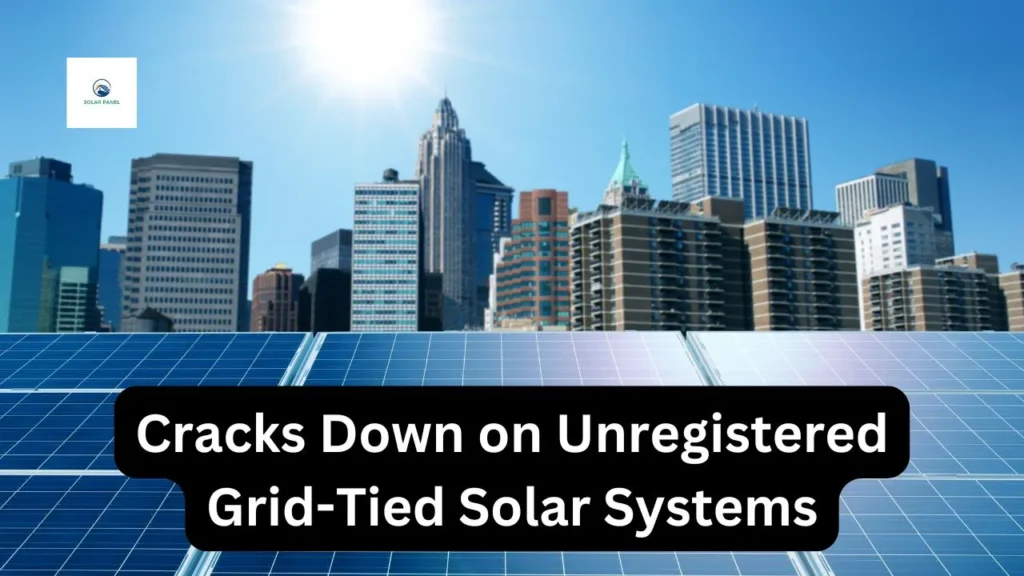As South Africa increasingly shifts toward clean energy solutions, Eskom has tightened its regulations on grid-tied solar power systems. Homeowners and businesses with unregistered solar setups now face strict enforcement and costly compliance measures.

Eskom Declares Unregistered Solar Systems ‘Illegal’
Eskom, South Africa’s primary electricity provider, has announced that all grid-tied solar power systems connected to its network must be registered. Systems that are not properly documented and approved are being labeled ‘illegal,’ regardless of whether they feed electricity back into the grid or not. This crackdown aims to ensure that solar installations align with Eskom’s safety and technical standards.
Previously, many solar installations operated under a typical Certificate of Compliance (CoC) issued by qualified electricians, which declared the systems safe and compliant. However, Eskom now considers a CoC alone insufficient for regulatory approval.
On-Site Inspections and Mandatory Compliance Upgrades
Eskom representatives have begun conducting on-site inspections of properties equipped with grid-tied solar power systems. During these visits, they assess whether the systems meet their updated standards. In cases where installations fall short, Eskom has mandated:
- Installation of additional equipment
- Upgrading to approved bi-directional meters
- Obtaining new authorizations and approvals
Affected homeowners and businesses are required to comply with these updates at their own expense. Reports indicate that the costs for compliance, including meter installations and conversion fees, have reached tens of thousands of rands for some property owners.
Understanding Eskom’s Small-Scale Embedded Generation (SSEG) Program
Eskom has explained that the rise of small-scale embedded generation (SSEG) systems reflects a significant shift in South Africa’s energy landscape. With more consumers installing solar systems to generate and distribute their energy, Eskom seeks to integrate these solutions into the national grid safely and effectively.
The SSEG program allows small energy producers to contribute clean energy back into the grid, which helps address South Africa’s growing demand for reliable and renewable power sources. However, grid-tied systems, even those not exporting power, must still receive Eskom’s formal approval.
Steps to Obtain Eskom Authorisation for Solar Systems
Homeowners and businesses with grid-tied solar systems must complete a formal application process to gain Eskom’s authorization. This process involves:
- Filing an Application: Submit the necessary forms and system details.
- Payment of Fees: Cover application and conversion-related costs.
- Signing New Contracts: Enter agreements addressing tariffs, technical standards, and legal regulations.
- Compliance with Metering Requirements: Install approved bi-directional meters where applicable.
Failure to meet these requirements can result in disconnection from Eskom’s network and additional penalties.
Why Eskom’s Regulations Matter
Eskom’s new measures aim to standardize grid-tied solar systems, ensuring:
- Safety Compliance: Proper installation reduces risks of electrical faults or hazards.
- Grid Stability: Regulated systems prevent overloads and maintain grid performance.
- Energy Integration: Better management of renewable energy contributions to the grid.
Conclusion
Eskom’s push to regulate grid-tied solar power systems highlights the need for homeowners and businesses to remain compliant with evolving energy standards. While the upfront costs of meeting Eskom’s requirements can be significant, these measures ensure the safe and efficient integration of renewable energy into South Africa’s power grid. If you currently have a solar system or plan to install one, understanding and adhering to Eskom’s authorization process is crucial to avoid penalties and ensure an uninterrupted power supply.
FAQs
Why does Eskom require grid-tied solar systems to be registered?
Eskom enforces registration to ensure solar installations comply with safety, technical, and legal standards, protecting the stability of the national grid.
What happens if my solar system is not registered?
Unregistered systems are deemed ‘illegal,’ and you may face disconnection, inspections, and penalties until compliance is achieved.
What is a bi-directional meter, and why is it required?
A bi-directional meter measures energy flow in both directions, ensuring accurate billing and monitoring of energy sent to and received from the grid.
Can I still use a solar system that does not feed power back into the grid?
Yes, but even non-exporting grid-tied systems require Eskom’s approval to remain compliant with the regulations.
